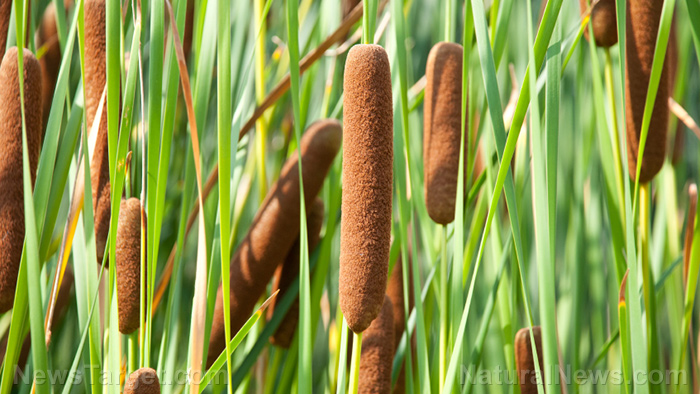Wilderness survival: Plants that you can eat (and those you shouldn’t)
Tuesday, October 23, 2018 by Michelle Simmons
http://www.bugout.news/2018-10-23-wilderness-survival-plants-that-you-can-eat.html

If you find yourself stuck in the wild, you have to survive and make use of what you have. One of the essential survival skills that you would need is knowing which plants are edible and which ones could kill you. As a starter, here are 10 common wild plants that you can eat. (h/t to BioPrepper.com.)
- Cattails: Cattails can be found in swampy areas, or near a creek or lake. Its root can be boiled or eaten raw – just make sure to clean it well before eating. Its stem can also be boiled or eaten raw, while its leaves can be cooked like spinach. Its flower spike can also be boiled and eaten like a corn-on-the-cob.
- Chickweed: Chickweed plants can be found in partially shaded lawn areas and other cultivated ground. They are stringy and produce tiny white flowers. They can be eaten like how you would eat sprouts.
- Chicory: This is a bushy plant that produces small blue, lavender, or white flowers. Its flowers and leaves can be eaten raw or boiled. Its root can be roasted and ground to use as a substitute for coffee.
- Curly dock: Curly dock plants, which are related to rhubarb, have large, wavy leaves. They grow from a taproot and do not need much water. You can eat this leafy green like how you would eat kale. Its leaves can be boiled, sauteed, or baked.
- Dandelions: Dandelions are one of the most easily identified plants, and all parts of a dandelion are edible. You can pick the leaves and stems and put them in a salad, while the flowers can be battered and deep fried. Moreover, the roots can be boiled to make tea.
- Lamb’s quarter: This plant can be easily identified by its leaves, which have jagged edges and a diamond shape. Its leaves can be eaten raw or cooked like spinach. Lamb’s quarter also contains some protein. However, it also contains oxalic acid, which is not good if you have kidney problems. It’s best to cook it first to neutralize this acid.
- Milk thistle: Milk thistle, which produces light purple flowers, may seem harmful because of its many spines, but it’s actually edible. Just use gloves when harvesting in order to avoid getting poked. Remove the spines off the leaves, then eat them raw or cooked.
- Pigweed (Amaranth): Pigweed can be found in gardens, fields, and other cultivated land areas. Pigweed can be easily identified through its flowers, which appear in small, green bristly spikes near the top of the plant. This plant can grow over six feet tall, and all of its parts are edible. To collect its seeds, shake the top of mature plants. The seeds can be eaten raw or cooked like a hot cereal, while the stems and leaves can also be eater raw or boiled.
- Plantain: Plantain is found in many lawns. Plantain leaves, which are wide-oval-shaped and ribbed, are best consumed when they are you to prevent bitterness.
- Purslane: Purslane can be found through the cracks in the sidewalk. This plant has smooth leaves and small yellow flowers. The stems and leaves can be added into your wild plant survival salad, or boiled to use as a thickener for soup. This plant can also be added to a stir-fry or sauteed.
Identifying poisonous plants
To increase your chances of survival, you should also be able to determine which plants are poisonous. (Related: Edible or poisonous? Tips on how to determine which wild plants are safe to consume.)
These five signs will indicate that a plant is most probably poisonous:
- Plants with discolored or milky sap.
- Plants with lacy foliage, resembling dill or carrot tops.
- Plants with spines, thorns, or fine hairs.
- Plants with yellow or white berries.
- Umbrella-shaped plants.
Another common characteristic of poisonous plants is they have glossy green or dull leaves. Plants with glossy green leaves and three leaflets in a leaf are also more likely to be poisonous.
Learn more tips and guides how to forage in the wild by going to Preparedness.news.
Sources include:
Tagged Under: Tags: bug out, edible weeds, foraging, how-to, off grid, Plants, preparedness, prepper, prepping, survival, survival food, sustainable living, wild edibles, wild plants

